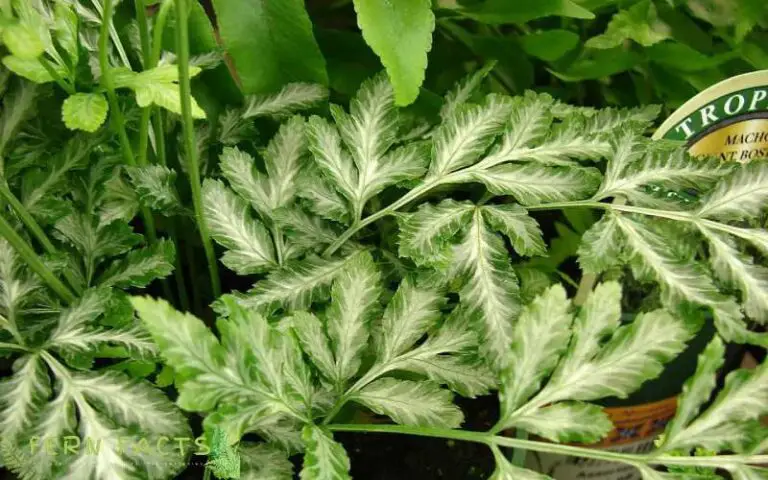Overwatering Ferns: Simple Way to Fix the Problem
Overwatering can create several problems for your plants. As ferns are less demanding plants however some primary demand can lead your ferns to give them problematic growth.
Ultimately, overwatering can kill the plants by destroying their roots. Therefore, in this article, I’ll provide you with the symptoms of overwater so that you can acknowledge your ferns’ health at the initial stage.
Later on, I’ll give you some tips and suggestions to revive your overwater plants into healthy growth. So let’s get started with the sign of overwatering.
Symptoms of Overwintering Ferns
Since overwater is the general problem of ferns, that’s why without acknowledging the problem, it will be hard for you to solve it. So, let’s look for some symptoms of ferns that are caused by overwatering:
Rotten Smelly Roots
However, If you slightly ignore the initial stage symptoms, it will ultimately lead your plants to have root rots. In such cases, your plant’s soil gets cold and damp.
The soil would be more soggy and mushy. Even if you press the soil, you’ll notice that the water will come through the soil. It means, already your fern roots have already started to rot.
Root Diseases
Rotten roots will cause your ferns to have several root diseases. If you thoroughly observe the roots, you will notice that the roots have already gotten darker than before.
Usually, it tends to have brown black color but it comes back green. Similarly, the outer portion will look mushy and soggy but if you cut the root ball with scissors, you will notice white materials inside of the roots.
You will also notice a distinctive smell that is coming out of the roots.
Dropping Leaves
Dropping leaves might be the initial symptom of overwatering the plants. Although this reason is common for a wide range of causes, overwatering is one of them.
If you see dropping leaves of your plants, then your plants are not happy. Therefore immediately check the soil and diagnose your plant before it becomes worse.
Yellow Fronds
Yellow fronds are another symptom of plants getting watered more than it requires. Although Yellow fronds are a part of their regeneration where during their growing seasons lots of leaves turn Yellow, but if the quantity becomes more then it’s a serious indicator for you to notice.
It means something is wrong with the plants or bothering them. So you need to check the plant’s health and routine immediately.
Soft Mushy and Soggy Leaves
Ferns are very elegant plants that are the best plants for indoor and houseplants. However, if you observe that your fern leaves are getting soft, mushy, and soggy then probably you are overwatering your plants.
You also notice some bruised marks on the leaves.
How to Revive Your Overwater Ferns
Since you already know the symptoms of overwatering, we can move to the next step which is reviving your overly-soaked plants to the normal situation.
Drying the Plants Naturally
If you already identified the problem during their early stage, then increase the light exposure of your ferns for at least 24 hours. It will speed up the drying process naturally.
Next, check the container or pot and try to make sure there is more than one potting hole. Also, choose the correct potting soil or mixture so that the extra water doesn’t clog the soil.
Select a Soil That Minimizes Water-logging
It is one of the possible reasons that your plants don’t have the capacity to drain out the extra water because of poor soil mixture.
Therefore, try to choose soil that is enriched with nutrients and proponents. Try to mix the soil with a supplement of compost like vermiculite, perlite, peat moss, coarse sand, etc.
These materials will balance the nutrient level of the soil and help the soil to absorb excessive water. Hence, it will solve the issue of waterlogging.
How to Revive Fern Roots That Have Already Started Rotting?
If you can’t identify the initial symptoms of overwatering, then it will lead your ferns to have rotten roots. Afterwards, the plants will die eventually.
In such situations, repotting is the only option to save your plants from dying. Therefore, choose a pot or container that is bigger than the present one (minimum 2 inches bigger).
Prepare the new soil mixture with organic compost, peat moss, vehicular, etc. Next, take out the plants from the pot gently, loosen the soil, and wash away with water.
It will reduce bacterial infection in the plants. Then select the fresh unharmed green leaves with unharmed roots. Don’t take any damaged roots or leaves, it will harm the fresh roots also.
Collect all the fresh fronds with healthy roots and repot them. Make sure you have gathered all roots and placed them inside the container equally.
After replanting or repotting the fern, do not give water for a minimum of 1 day or 20 hours. Let the plants adjust to the soil. After that, you can follow your daily water routine according to the individual species.
Watering Tips for Your Ferns
Watering is the most crucial factor for any plant that can do both good and harm to the plants.
Being a plant owner, you need to understand when and how much water you should give to your plants as both underwater and overwater can kill your dear plants.
Individual Species Requirements
Not all ferns have the same water requirements. However, most of the ferns are fond of a humid atmosphere with damp moisture.
But that doesn’t mean you will overly soak your plants into the water because they might not have the tolerance of standing water. However, individual species’ water demands are different.
Therefore, acknowledge the plant’s species and try to understand their characteristics. It will help you to thoroughly get through your plants.
Thumb Check-up
If you are unable to understand your plant’s characteristics or requirements, then you may try this thumb checkup trick to water your plants.
In this trick, you need to press the soil with your thumb and observe whether the water is coming out of the soil or not. If you feel the soil is still wet or soggy then wait for the soil to dry completely.
Don’t water immediately. After the soil is dry completely then you can water the plants.
Common Tips for Healthy Growth of Your Ferns
Eventually, all problems are interconnected to each other. That’s why other problems like ideal light conditions, temperature, humidity, and fertilizer may also cause the same problems to your dear plants. Therefore,
- try to give them their ideal lighting as most of the ferns require full shade to partial shade with a bright atmosphere. And so, try to give them filtered or dappled lighting to grow. Some ferns can tolerate full sunlight however excessive sun exposure can burn out their fronds.
- Similarly, their ideal humid atmosphere and temperature will also help the ferns in their healthy growth.
- Moreover, try to fertilize your ferns during their growing seasons. It will boost their growth and also give them a thriving life.
- Lastly, try to repot your ferns once in two years. This will also give your ferns extra space to grow simultaneously.
All this easy maintenance will enhance your fern’s growth which will bless them to a healthy life.
Sum Up
In a nutshell, overwatering is one of the most common problems of ferns which can harm your plant’s health and eventually lead your plants to die.
If you observe any smell, smelly roots, yellow leaves, dropped fronds, or Rotten roots, that means you need to take action immediately.
That’s why, try to identify all the symptoms beforehand to troubleshoot all the problems. Hence, you can give them a healthy and thriving life by following those guidelines easily.







